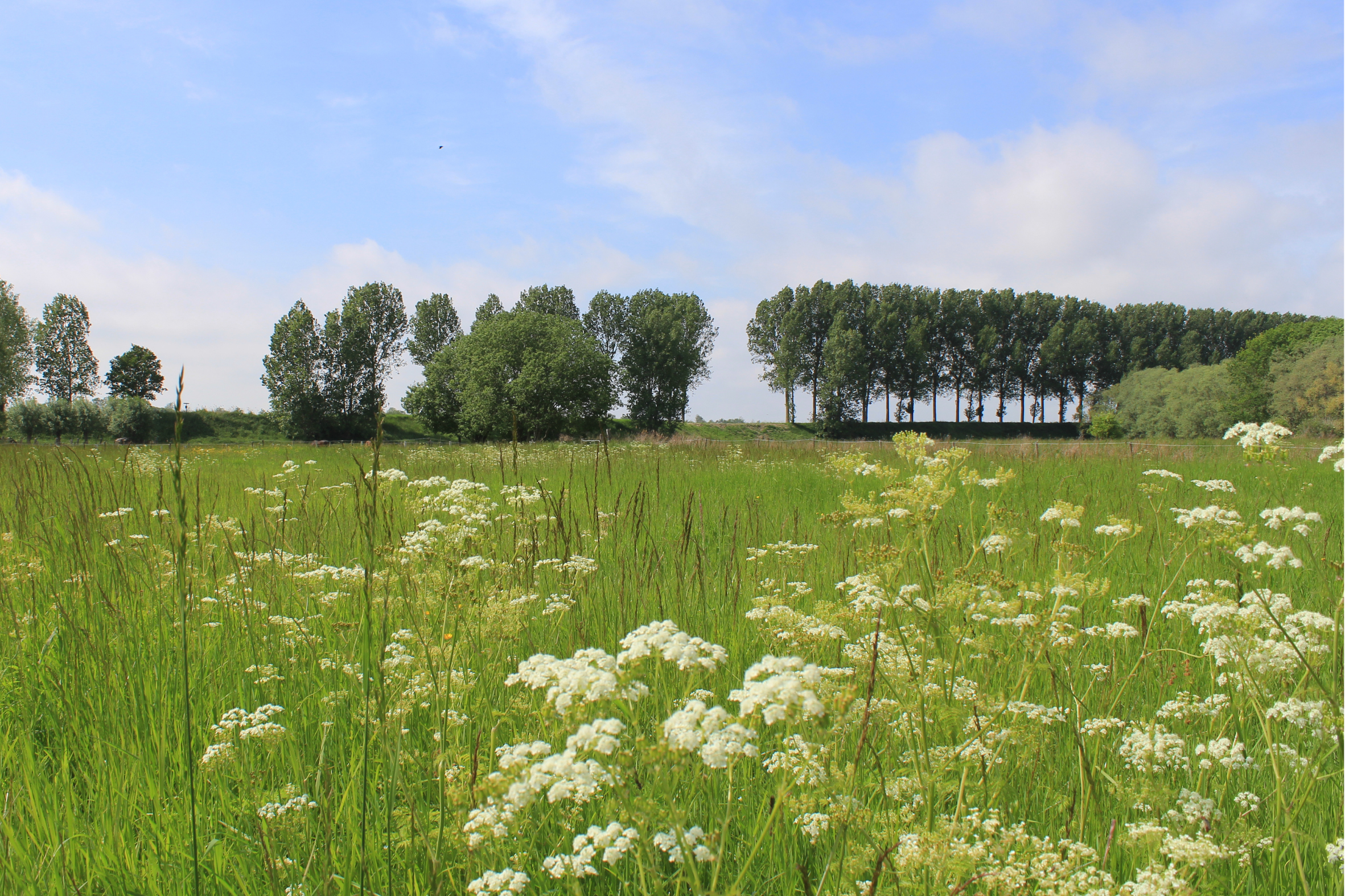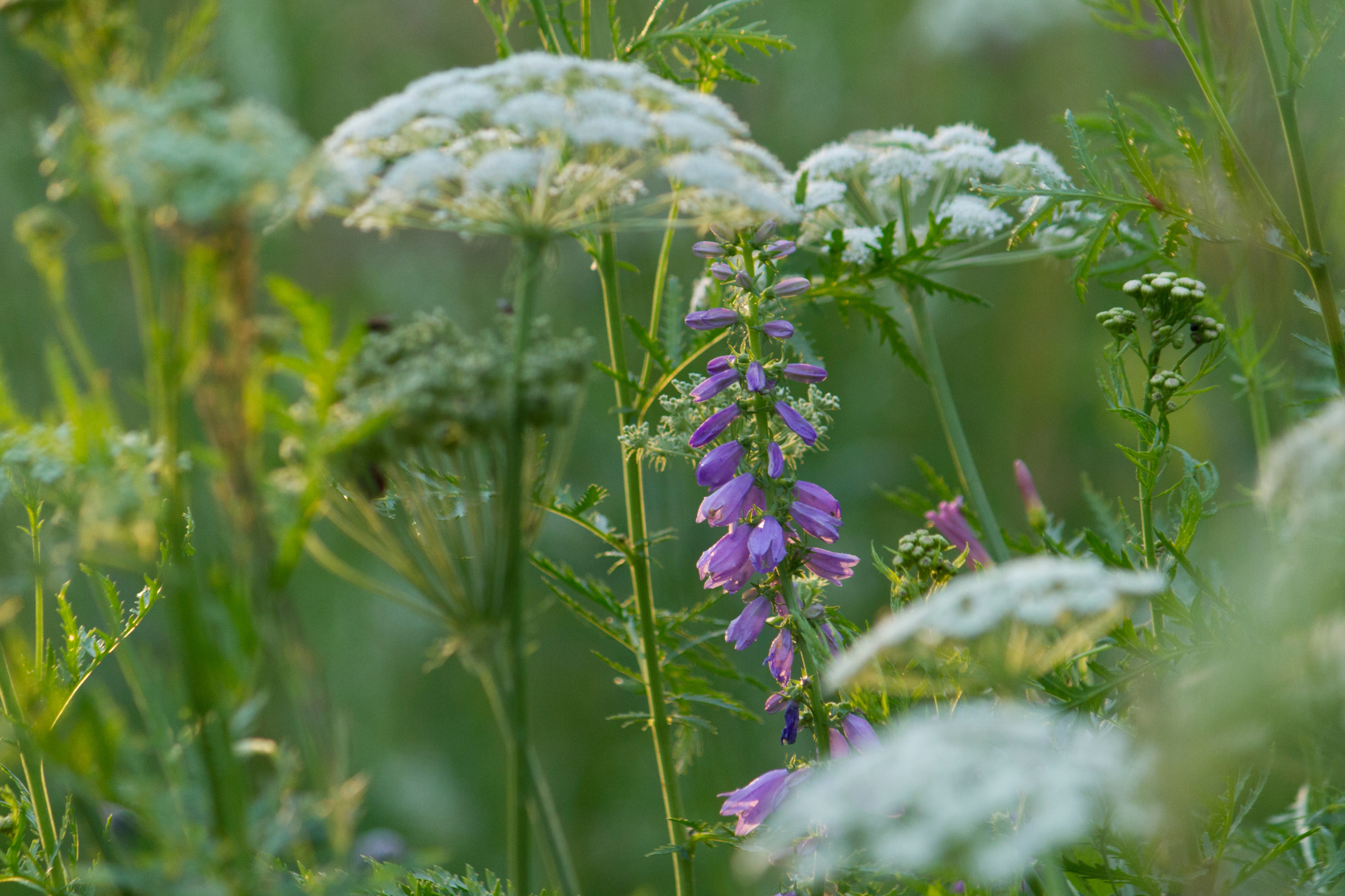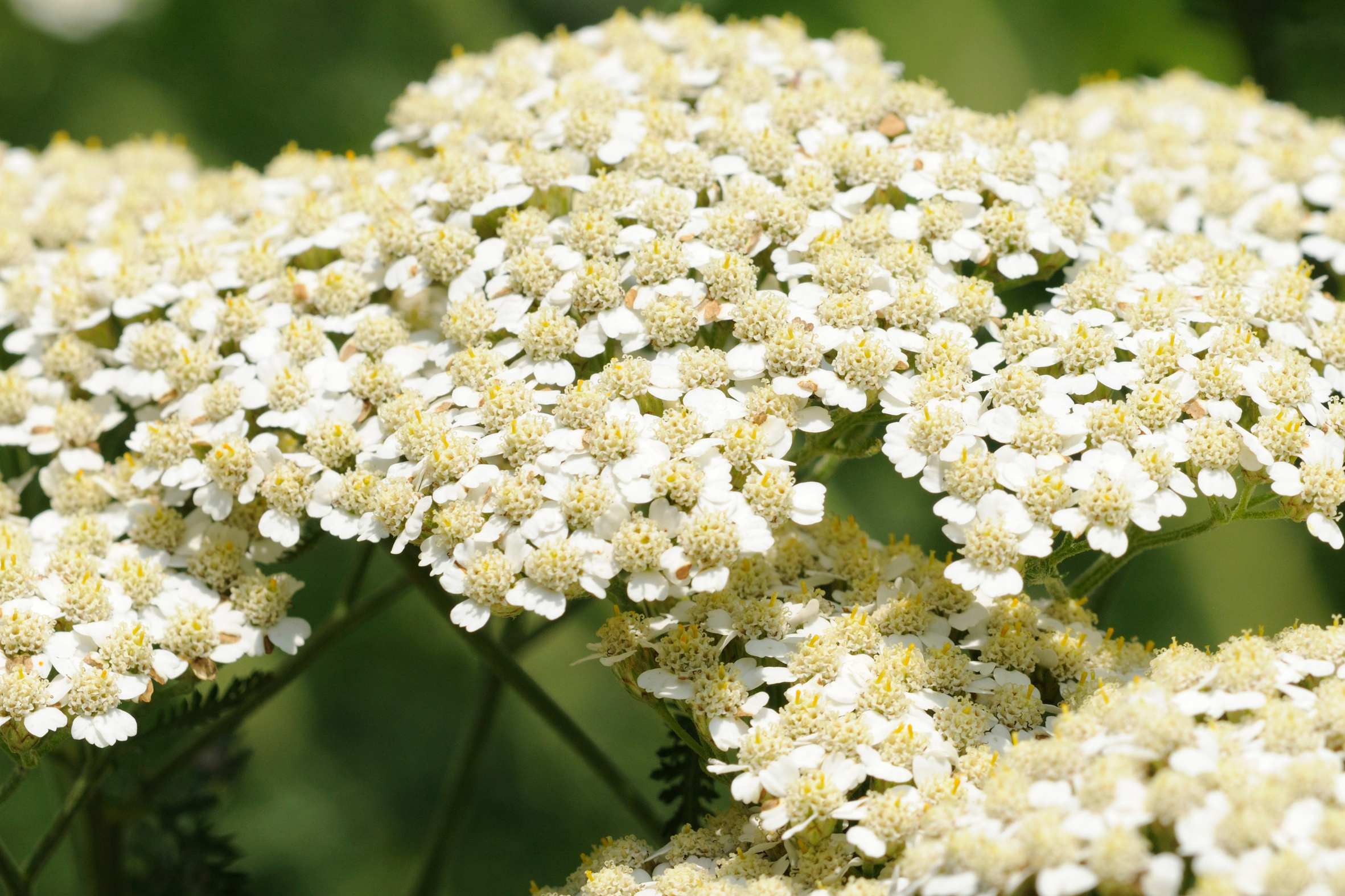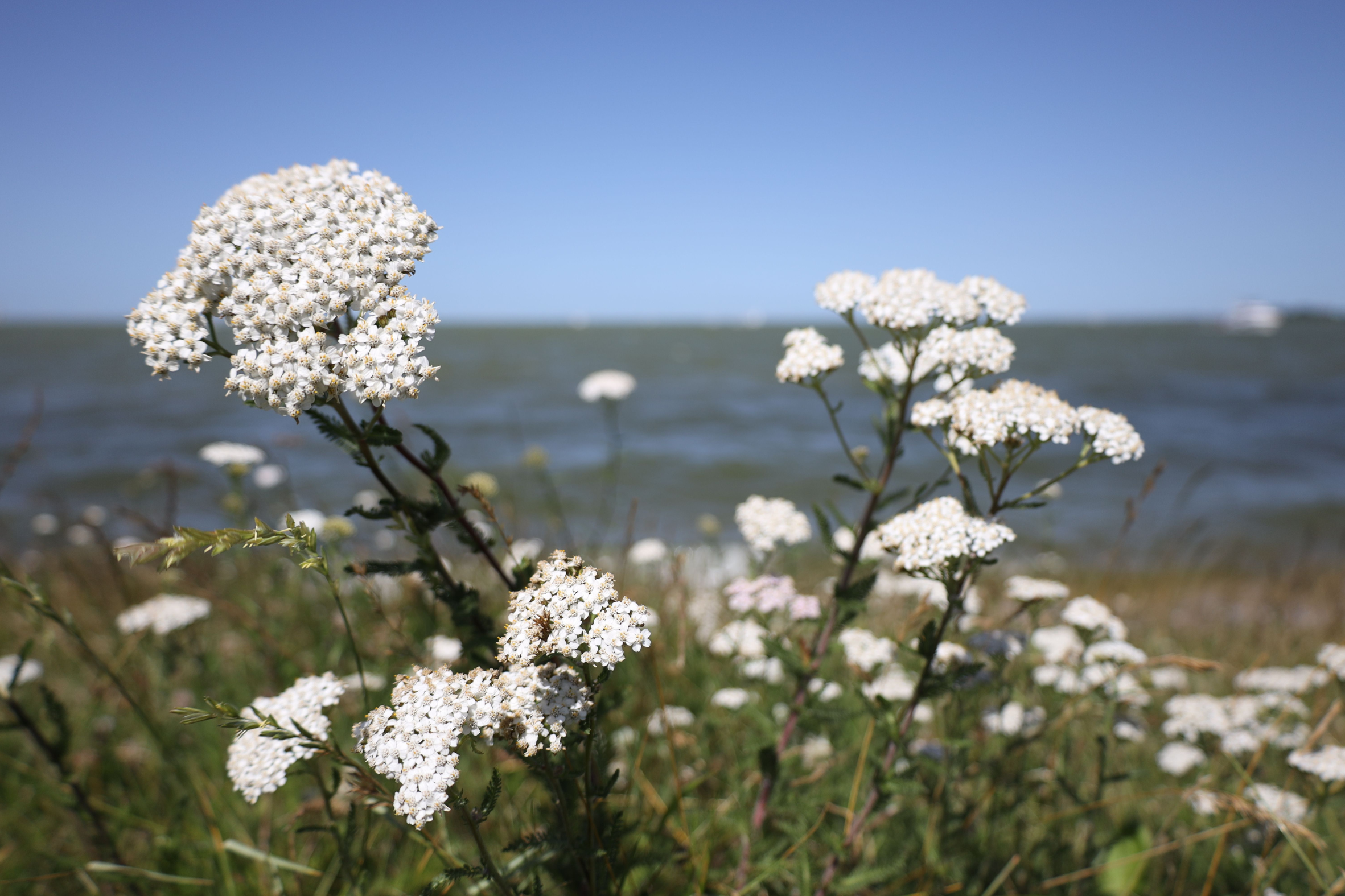Common yarrow, scientifically known as Achillea millefolium, is a perennial plant that grows upright or spreads outwards through rhizomes. It is considered by many to be assertive due to its ability to naturalize and spread quickly. The plant is originally from Europe and Asia but has been introduced to America, where it can be found along roadsides, fields, waste areas, and lawns.Common yarrow produces feathery, fern-like, aromatic foliage that is medium green. The plant also produces tiny white flowers that appear in dense, flattened clusters throughout the summer on stems that rise 2-3 feet tall. The foliage has a strong, somewhat spicy aroma that persists when dried, making it a popular choice for drying arrangements. While species plants are not commonly sold in commerce, cultivars and hybrids of common yarrow have become popular flowering plants for ornamental gardens, with many having stronger stems, more upright habits, and more prominent flowers. These cultivars also extend the range of flower colors, including pinks, reds, creams, yellows, and bicolor pastels.
The genus Achillea is named after Achilles, the hero of the Trojan Wars in Greek mythology, who used the plant medicinally to stop bleeding and heal his soldiers' wounds.
Common yarrow plants grow best in lean, well-drained, sandy loams in full sun. They can also tolerate poor soils if drainage is good and hot, humid summers, and drought. If grown ornamentally, they are best suited in locations protected from strong winds. Consider cutting back plant stems in late spring before flowering to reduce overall plant height. After initial flowering, cutting plants back to lateral flower buds will tidy the planting and encourage additional bloom. Plants may also be cut back to basal foliage after bloom. Divide clumps every 2-3 years to maintain the vitality of the planting. However, keep in mind that plants spread aggressively by rhizomes and self-seeding and can naturalize into substantial colonies if left unchecked.































